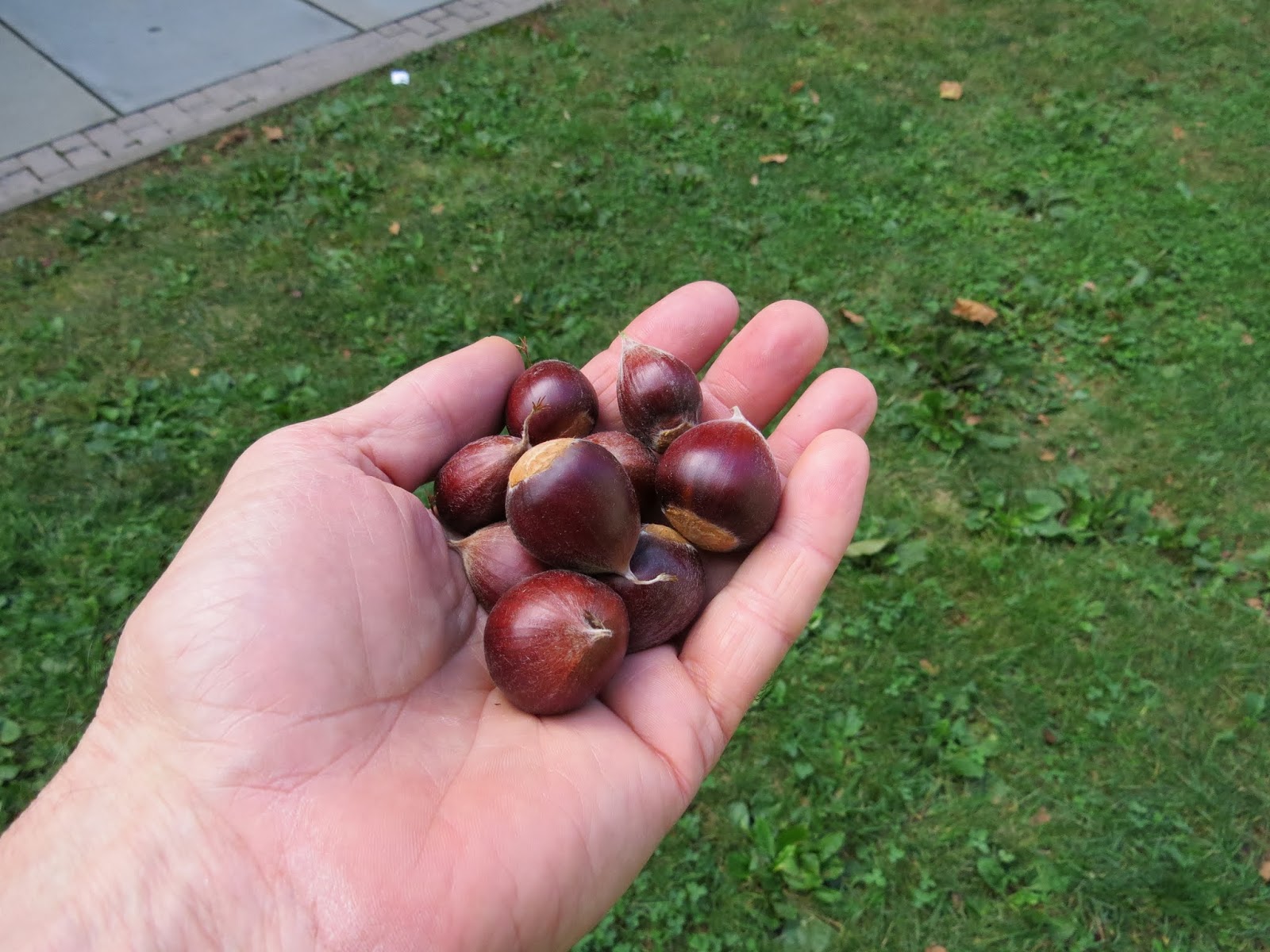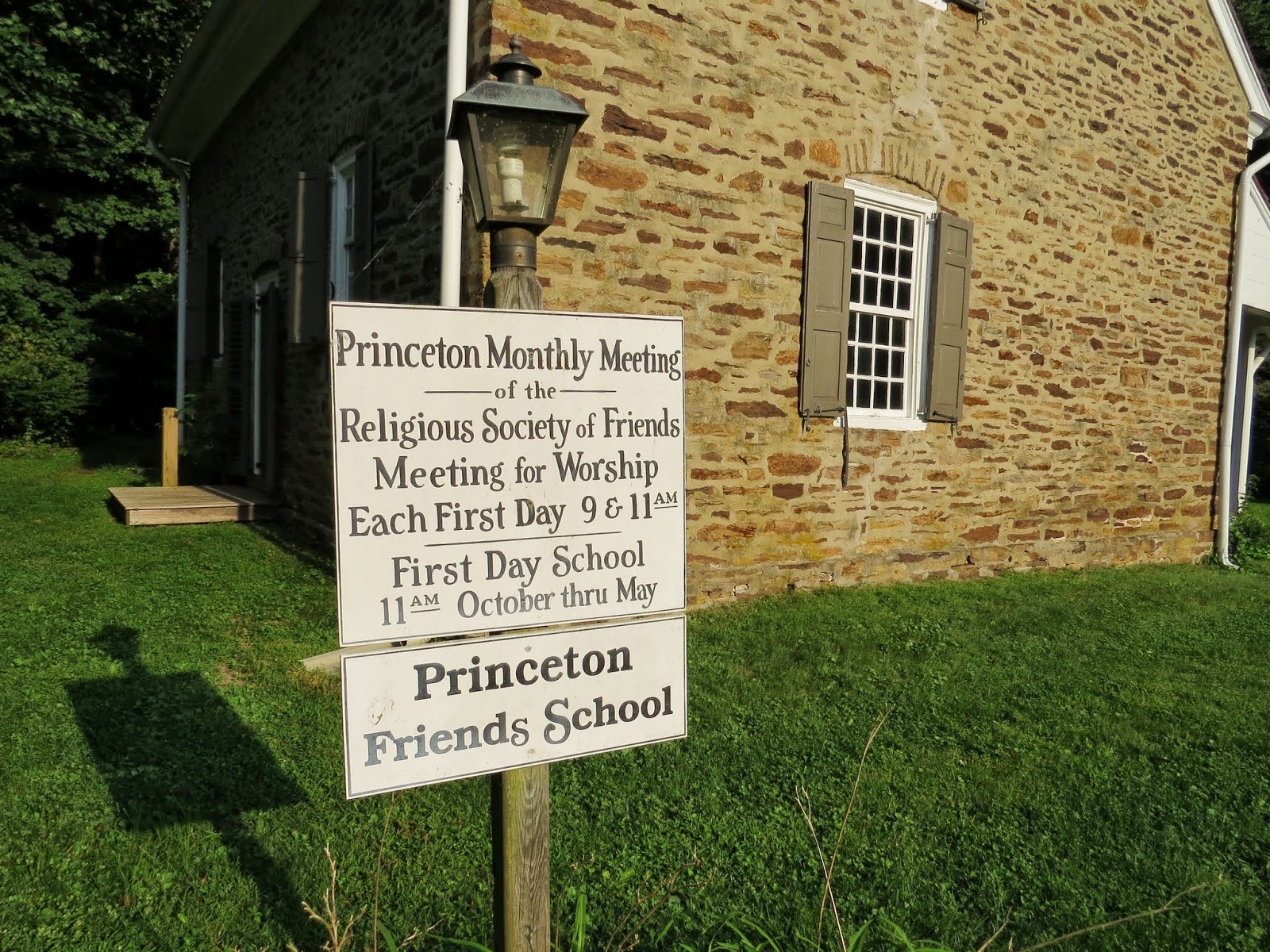An environmentally themed Saturday should ideally begin big, with, for instance, the idea of recycling a house. The house in question, brimming with well preserved 2X4s and long spans of 2X8s, is being taken down piece by piece in my neighborhood, which of course I probably wouldn't have noticed if I wasn't the designated dog walker. I introduced myself and asked if they could set aside the wood so that the
Friends of Herrontown Woods could use it for refurbishing the historic
Veblen house and cottage. Yes, said the contractor. A small cheer rose from my heart. It will take some followup, though, to make sure the workers don't cut all those beautiful old floor joists and rafter braces up into short lengths.
Saturday being the last electronics recycling day of the year, I asked a neighbor if I could take his television along. He had put it out on the curb a couple weeks prior, hoping someone would take it home and use it. I had taken that opportunity to knock on his door, introduce myself as a neighbor, and let him know that it's "illegal" (that's the New Jersey spelling of illegal) to landfill TVs and computers. I doubted anyone would take the TV home to use. More likely, a scavenger would come along,
break the back panel and make off with the copper coil--good for a couple dollars at the local scrap yard. By the time electronics recycling day arrived, he had a matching pair of behemoths ready to go, making the pickup truck look like an ark for electronics.
As we pushed them up onto the truck with a dolly (no back-breaking heroics, thank you), I noticed he had an old Mustang in his garage. He bought it in 1965, and it still serves as a backup for his bicycle. He said he bicycles more miles in a month than he drives in a year. Now there's something to aspire to.
The guys at Princeton's
Shrredtemberfest (closer than the county's parallel event) were good sports about unloading.
Found two more TVs out on the curb on the way to the bank,
so it was back to Shrrrrrrredtemberrrrrfest so the rejected TVs could join the rest of the old and bloated on a journey to productive deconstruction.
With 300 pounds of TVs delivered for recycling, it was time to repair a folding ping pong table. With the quick tempo of life, and factories glutting the marketplace with merchandise, the art of repair has generally fallen into disrepair. Many people give up on an item at the first sign of defect. Though the ping pong table had been abandoned, it was still in good shape, and needed only a couple screws and some tightening up of the metal frame to be functional again. That's another 250 pounds diverted from the landfill, and a $500 item that can now have a new life.
Later, I was taking my family to the train station when we started seeing bicyclists funneling into Princeton on Washington Rd, like monarch butterflies making a fall migration. They turned out to be 175 strong, part of the annual
Climate Ride from New York to Washington, D.C. Back in colonial times, it took two days to ride a horse the 100 miles between New York and Philadelphia. Princeton was conveniently located midway for a stopover. Remnants of the historic inn may still exist in the Gulick House, out towards Kingston.
The Climate Riders (shall we call them the Earth's Angels, with strong hearts instead of leather jackets?) use Princeton the same way, for their first night's stopover. They pitch their tents
on the lawn at the YM/WCA, then head to campus for some inspiring lectures. With each speaker receiving cheers, it was one of the more spirited gatherings to talk about climate change, starting with a showing of the short video,
The Man Who Lived On His Bike. The leader of the student group Surge made brief remarks, followed by the ride's top fundraiser, who works at the World Bank. She described the projected impact of a 4 degree centigrade rise in temperature this century. "Small number, big problem," was the memorable phrase. She was followed by Deborah Goldberg of EarthJustice, who gave a primer on the many downsides of fracking, lest we think that natural gas is a clean alternative to other fossil fuels.

On the way out, one of the cofounders encouraged me to join the ride next year--flattering, though as a veteran puddle jumper I look upon touring bicyclists as somehow inhabiting another plane of reality, beyond anything I could aspire to. Heading home, with Nassau Street alive with people on a mild fall Saturday evening, I heard a roar coming from the stadium area of campus. It was a bigger roar than the 175 climate riders could muster, with the focus not on carrying civilization and nature safely into the next century, but rather carrying a ball across the goal line.
Have to say, Princeton's offence is impressive. They kept Lehigh on their heals with varied plays, no huddle, and a quarterback who can both throw and run. Princeton scored easily on the series that I watched before departing as the first raindrops began to fall. It was ultimately a losing effort, 28 to 29, but they showed up, played hard, and their skill and spirit made for a thrilling contest. The articles in the paper will tell of the tough loss, the lessons learned, the need to bounce back. In a day, a week, a season, what mattered so much at that moment when the game was won or lost will be forgotten.
Meanwhile, the biggest game of all, the one whose consequences will never be forgotten, is being played every day. It's the fourth quarter, and all the players (that would be all of us, the Climate Tigers?) are still arguing about whether to show up, whether the opponent is really, really real, who will carry the ball, whether victory is even possible. The recyclers made a nice end run around the landfill with all of those TVs. Reusing the wood from the house could be a breakthrough right down the middle, if the contractor agrees to play. The Climate Riders are leading the cheer right down the eastern seaboard.
My now, two days later, the Not So Easy Riders are halfway to D.C., riding 50 to 75 miles a day along country roads. Monarchs, also headed south, can do 30 to 50 miles a day, gliding on favorable winds.
On one level, it's all a game, in the exhilarating sense that there is a goal, an obstruction, victory and defeat. There's the sport of recycling a house, or a TV, of moving a ball down the field or a bike down the road, or of reaching 2100 with a hospitable planet still in our keeping. It's just that the stakes are radically different. Lose a football game, life goes on. Lose a stable climate, life is forever diminished. And yet the loudest cheers are for what matters least. All that passion being spilled on ephemera, day after day. Yes, let's revel in the thrill of a goal line stand. But don't forget that we're players, too, whether we admit it or not, in the highest stakes game any of us will ever play.
I savored the cheers rising from the crowd of Climate Riders, and can only hope they grow.































